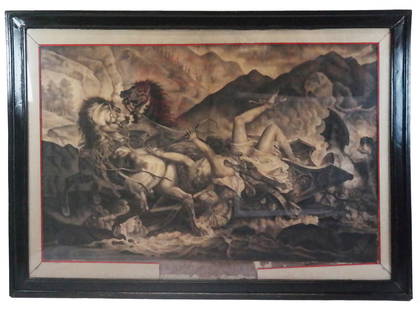
Claude Monet (French, 1840–1926) - La Couseuse au Corsage Rouge
Claude Monet Sale History
View Price Results for Claude MonetRelated Prints & Multiples
More Items from Claude Monet
View MoreRecommended Art
View More



Item Details
Description
Pastel counterproof on parchment
9 ½ x 15 in. ( 24.1 x 38.1cm)
Executed in 1868.
Provenance
Collection of André Barbier, Pennsylvania.
Galerie Michael, Beverly Hills, California.
Private Collection, California.
Literature
Daniel Wildenstein, Claude Monet. Biographie et catalogue raisonné. Lausanne-Paris, La Bibliothéque des Arts, Fondation Wildenstein. Vol. V: Supplément aux peintures Dessins, pastels, index, 1991, pp 165.
Lot Essay
Counterproofs, a lesser-known aspect of the printmaking process, offer valuable insights into the working methods of artists, particularly the French Impressionists. Unlike standard prints pulled directly from a printing plate, counterproofs are impressions made from a freshly printed image–or, less commonly, from an original work on paper, as in the present lot, La Couseuse au Corsage Rouge (1868). The result is a print that is reversed from the original yet, crucially, possesses the same orientation as the design on the plate/image itself.
The Impressionists, known for their emphasis on light, fleeting moments and sketchily-rendered forms, employed counterproofs for several reasons. First, counterproofs allowed artists to assess the quality and detail of their etched lines, lithographic marks, and original drawings. The damp paper used in the counterproofing readily picked up even the subtlest traces of ink or pigment, revealing the character of the artist's mark-making. This was particularly important for the likes of Monet, Renoir, Degas and Cassatt, who relied on a network of delicate lines and textures to capture the essence of their subjects.
Furthermore, counterproofs provided the means to make compositional adjustments. Since a counterproof displayed the design in the same orientation as the printing plate, it allowed the artist to visualize the final print more accurately. By studying the counterproof, the artist could identify areas requiring elaboration or refinement before proceeding with a full tirage.
The ephemeral nature of counterproofs, often created on expendable paper with less care for inking or editioning, adds to their uniqueness. Unlike meticulously crafted final prints, counterproofs offer a glimpse into an artist's process and penchant for experimentation. Subtle differences in line, variations in ink density, or reworked passages between the counterproof and final edition can reveal an artist's iterative approach to achieving a desired effect.
Counterproofs, then, hold a privileged position within the printmaking process. Monet, although arguably least likely among his peers to employ the method, does so to great effect in La Couseuse au Corsage Rouge. A depiction of Camille-Leonie Doucieux, the image is as much a portrait of the artist’s future wife as it is an exercise in tonal values, color harmonies, and subtle gradations. Rich pastel highlights lend visual interest and firm up compositional details, from the fireplace and fainting couch to the figure’s red bodice.
Buyer's Premium
- 32% up to $1,000,000.00
- 26% up to $4,000,000.00
- 20% above $4,000,000.00
Claude Monet (French, 1840–1926) - La Couseuse au Corsage Rouge
Shipping & Pickup Options
Item located in Philadelphia, PA, usPayment





























![Fernand Leger "Dessin pour la femme" Lithograph: Fernand Leger (French, 1881-1955) "Dessin pour la femme en rouge et vert" [Drawing for a woman in red and green] lithograph, 1913, depicting an abstracted figure, signed in plate and stamped lower rig](https://p1.liveauctioneers.com/5649/308448/164837336_1_x.jpg?height=310&quality=70&version=1699040341)






















![Tahiti being ceded to Captain Wallis by Queen Obere. Otahiti. Reine Obéréa 1789: CAPTION PRINTED BELOW PICTURE: Cession de l'Isle d'Otahiti au Capitaine Wallis par la Reine Obéréa [Tahiti being ceded to Captain Wallis by Queen Obere] DATE PRINTED: 1789 IMAGE SIZE: Approx](https://p1.liveauctioneers.com/5584/326888/175994724_1_x.jpg?height=310&quality=70&version=1713903186)

































